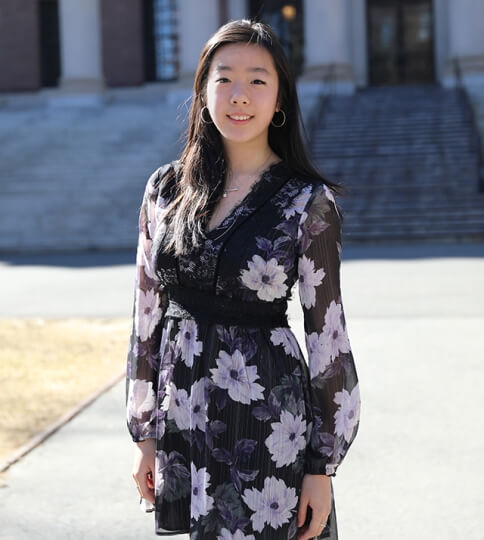Engineering Design Projects (ES 100), the capstone course at the Harvard John A. Paulson School of Engineering and Applied Sciences, challenges seniors to engineer a creative solution to a real-world problem.
Engineering Alginate Scaffolds for Controlled Hydrogel Degradation and Delivery of Tendon-Derived Cells
Cathy Wang, S.B. ’20, engineering sciences
For the millions of individuals who suffer tendon injuries each year, the healing process often takes months or years as cells migrate, proliferate, and regenerate at the injury site. In an effort to accelerate tendon healing, Wang engineered a degradable hydrogel scaffold that would be suitable for cell seeding. The scaffold would be placed on a patient’s tendon during surgery and, over time, it would release tendon cells into the body, which could help deposit collagen for tissue repair and recruit cells locally. By reducing the latency period for native tendon cells to migrate to the injury site, the scaffold could improve tendon healing in a shorter time span. For Wang, the biggest challenge of this project was navigating the many unknowns about the effects of the microenvironment on cell behavior.
“It was a great experience developing my own independent research project. I learned a lot about experimental design, data analysis, troubleshooting, and time management,” she said. “The goals I set were a bit high to start, which means I needed to plan ahead and constantly adapt to realize what’s achievable, especially because ES 100 had a short timeframe.”
Press Contact
Adam Zewe | 617-496-5878 | azewe@seas.harvard.edu
